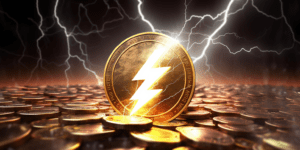Introduction
The concept of tokenized assets represents a paradigm shift in ownership and investment. In this article, we’ll explore tokenized assets, how they are digitizing ownership in the modern era, and the far-reaching implications of this transformative innovation. From real estate to art and beyond, asset tokenization is revolutionizing how we invest and participate in ownership.
Understanding Tokenized Assets
Tokenized assets are traditional assets, such as real estate, stocks, or commodities, represented as digital tokens on a blockchain:
- Fractional Ownership: Tokenization allows assets to be divided into smaller, more affordable units, enabling fractional ownership.
- 24/7 Liquidity: Tokenized assets can be bought and sold 24/7 on global markets, enhancing liquidity.
- Transparency: Ownership records and transactions are transparent and immutable on the blockchain, reducing fraud and disputes.

Benefits of Asset Tokenization
Asset tokenization offers a multitude of benefits:
- Accessibility: It democratizes access to investments, allowing a broader range of people to participate in asset ownership.
- Liquidity: Tokenized assets can be bought and sold quickly, eliminating the need for lengthy sales processes.
- Security: Blockchain’s security features enhance the protection of asset ownership.
Applications of Tokenized Assets
Asset tokenization has applications across various industries:
- Real Estate: Tokenization enables individuals to invest in real estate without the need for large capital outlays.
- Art and Collectibles: Ownership of art pieces and collectibles can be fractionalized, making art investment more accessible.
- Stocks and Equities: Companies can issue tokenized shares, simplifying stock ownership and trading.
Challenges and Regulatory Considerations
While asset tokenization holds great promise, it faces challenges:
- Regulation: Regulatory frameworks for tokenized assets are still evolving, posing legal and compliance challenges.
- Security: Ensuring the security of tokenized assets and platforms is paramount to prevent hacks and fraud.
- Market Adoption: Widespread adoption of asset tokenization may take time, as traditional systems are deeply entrenched.
The Future of Ownership
Asset tokenization is reshaping ownership in the modern era:
- Democratization: It democratizes access to investments and ownership, empowering individuals worldwide.
- Efficiency: The process of buying, selling, and transferring ownership becomes more efficient and cost-effective.
- Globalization: Tokenized assets can be traded globally, reducing geographical barriers to investment.
Conclusion
Tokenized assets represent a significant shift in ownership and investment, offering accessibility, liquidity, and security. Whether you’re interested in real estate, art, stocks, or other assets, the digitization of ownership is expanding opportunities for individuals worldwide.
As the landscape of tokenized assets continues to evolve, staying informed about regulatory developments and understanding the potential risks and rewards is essential for investors and enthusiasts alike. The future of ownership is becoming more inclusive and interconnected through asset tokenization.
For more insights on tokenized assets and the latest developments in the cryptocurrency and blockchain space, visit Cryptopulse Hub.







